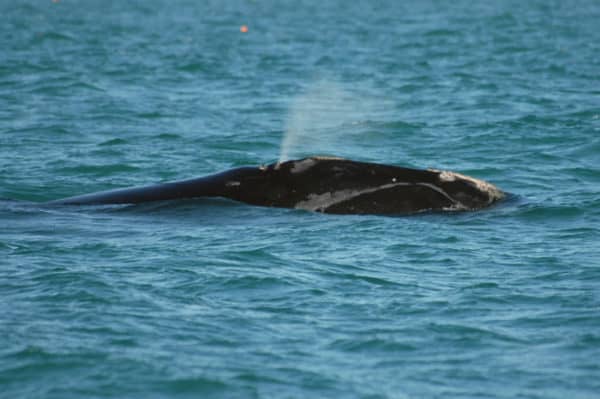
One of the rarest creatures on Earth has only 500 members of its species left.
The North Atlantic right whale has been hunted to near extinction by humans over the centuries, and now, after a brief window where the population seemed to be on a slow but steady increase, the lack of new births is a troubling sign.
So-called by whalers along the New England coast because they were the “right” whale to kill for oil and baleen, the North Atlantic right whale population has such low numbers that even losing a few every year (fishing net entanglements and ship strikes are two human-caused factors) makes a significant impact.
“The whole story on right whales is very simple arithmetic: How many die and how many are born?” says Charles “Stormy” Mayo, director of right whale ecology at the federally funded Center for Coastal Studies in Provincetown, Massachusetts, to the Associated Press. “The birth rate this year is extraordinarily low. We’ve only seen four whales born in the North Atlantic. And the mortality rate is up.”
The right whale first received protection from commercial hunting in 1935 with the Convention for the Regulation of Whaling, yet since neither the Soviet Union nor Japan were signatories, hunting persisted and its population kept declining. By 1997, there were only an estimated 295 animals left.
Mayo says that although recent efforts to reduce shipping speeds along certain routes in the Atlantic seem to have reduced the number of serious collisions, net entanglements remain a major issue for the right whale. “Eighty percent of the population bears entanglement scars. As we speak, somewhere offshore there’s a whale that’s dragging gear,” says Mayo. “There’s some evidence that female right whales, if they’ve been entangled, are weakened and have a diminished capacity to reproduce. That may help explain the low calving rate.”
Every winter, the right whales travel to the warmer waters off the coasts of Georgia and Florida where they give birth. This past winter marked a 17-year low with only three newborn whales spotted. Below-average birth numbers have been observed for the past five years, a noticeable trend, says Clay George, wildlife biologist for the Georgia Department of Natural Resources. “The preliminary data are starting to show the population may be flat or declining,” George said. “But considering how the population turned around in the 2000s, I think it’s too early to be too doom-and-gloom about it.”
Last month, the US government put out new rules for seafood imports which require that suppliers provide proof that their catches were harvested in a way that minimizes harm to marine mammals like whales. For Canadian fisheries, the rules could mean changes to fishing seasons, fishing grounds or investment in different equipment.
For the right whale, the south coasts of Nova Scotia and New Brunswick are part of its summertime habitat, meaning that commercial fishing in those area may be affected by the new US regulations. One recommendation has been to close two fishing grounds to keep fishing gear out of the right whales’ path, one around Grand Manan in the Bay of Fundy and the other at Roseway Basin in southwestern Nova Scotia.
“It’s these two areas where we are making our recommendations that seem to be the easiest place to achieve significant conservation benefits with little cost to fishermen,” says Sean Brillant, a conservation biologist with the Canadian Wildlife Federation in Halifax and co-author of the recommendations, to CBC News
Leave a Reply
You must be logged in to post a comment.




 Share
Share Tweet
Tweet Share
Share




Comment